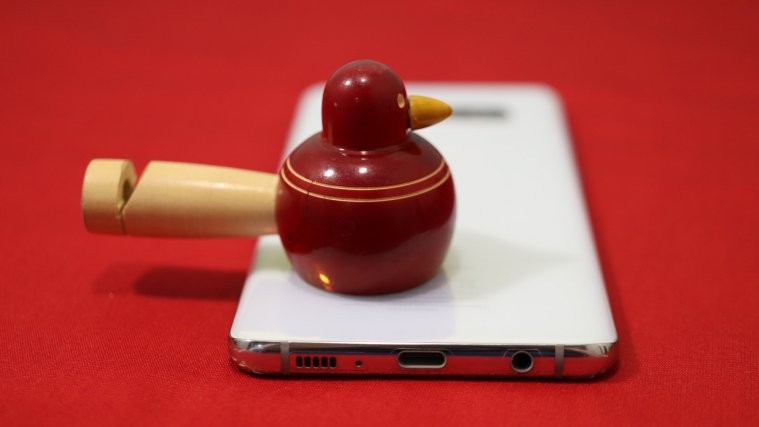It’s that time of the year again. Cakes, parties, long vacations, and the hope of tackling the upcoming year better than ever. On the surface, all might look eerily similar to every other year, but there’s a bit more significance to 2019’s December.
The last few days of this December not only marks the end of the year, but it also draws this decade — 2010 to 2019 — to a close. So, we are taking this time to reflect on how far the world of smartphones has come over the last 10 years.
The selection!
Many aspects have changed of the modern-day smartphones, so, it could be too big a challenge to list out all the major trends of the last decade. Hence, we have decided to strip this down to the bones and demonstrate how consumer devices have changed.
To do so, we are pitting two Samsung devices against one another — the first Galaxy S smartphone (I9000) versus the current flagship, the Galaxy S10.
Why these two devices?
With so many devices to choose from, the decision to pick two Samsung devices might seem a bit weird to you. So, we just want to assure you that we have a pretty decent reason to do so.

Apart from the obvious correlation between the two — S10 being Galaxy S’ latest successor — Samsung’s global supremacy has also been taken into account. As per the latest market data, Samsung is the leading smartphone manufacturer in the world, which clearly demonstrates how great the company has been at maintaining its stronghold, even in such a competitive market.
The main event
We all know that the Galaxy S10 is leaps and bounds ahead of the first Galaxy S smartphone ever created. So, we’re not too concerned with the spec sheet and raw numbers here. Instead, we’ll be focusing on five categories we care about the most — Display, Performance, Camera, Software, and Battery. Now, without further ado, let’s dig in.
Display
Samsung has a reputation for delivering best-in-class displays, and we can see the trend tracking all the way back to the first-gen Galaxy S. For a device, which was launched way back in 2010, having a 4-inch Super AMOLED screen is highly impressive; probably more than S10’s 6.1-inch Dynamic AMOLED, curved screen.
The original Galaxy S came with a 480P display, which, in hindsight, feels very inferior to S10’s 1440P panel. However, considering that 480P used to be the norm for flagships back in 2010, we can’t really bash the old-timer.
Galaxy S 2010’s screen-to-body ratio clocked in at 58%, which is a whopping 30.3% less than the S10. This clearly demonstrates how much attention Samsung and other OEMs have paid to improving the screen-to-body ratio, packing more pixels in a pocketable form factor.
Performance
The Galaxy S came with 1.0 GHz Cortex-A8 chipset and 512 MB of RAM, which was more than enough at the time. A decade newer Galaxy S10 flaunts octa-core Snapdragon 855 and houses 8GB of RAM — 16 times more memory than the first generation flagship.
However, despite having 16 times more memory than the Galaxy S, S10 cannot be considered the most well-endowed device on the market. Significantly cheaper devices such as the Xiaomi Redmi Note 8 Pro or even the OnePlus 7 come with similar memory options, which goes on to show the increasing need for RAM in order to feed memory-hungry applications.
Camera
Cameras on smartphones have certainly taken a turn for the better over the past decade. From single rear-cameras to premium Penta shooters, we’ve surely come a long way. Samsung smartphones may not produce the best camera setups on the market, but they’ve never been slouches either.
The first-generation Galaxy S came with a single 5MP rear camera and a respectable VGA selfie shooter. The rear camera had 720P video recording while the front limited to SD video capture. S10, on the other hand, has three rear cameras — 12MP Wide-angle, 16MP Ultra-wide, and 12MP Telephoto — and a 10MP selfie camera. Both front and rear cameras can record in 4K.
Software
At the time of launching the Galaxy S, Samsung only used to allow its flagships one major Android OS upgrade. So, the Galaxy S was naturally pushed from Android Eclair to Android Gingerbread. Many anticipated the update to Honeycomb, but the South Korean OEM never got around to getting it.
Thankfully, policies have changed over the decade, and the devices are now granted two Android OS updates in a timely manner. The S10 was launched with Android 9 Pie and has already been upgraded to Android 10. The current S-series flagship is also guaranteed to get Android 11, next year.
Battery
The former four subsections have clearly demonstrated that the spec-sheet doesn’t always tell the complete story. And When it comes to battery, it’s often quite the opposite.
The decade-old Galaxy S had a 1500 mAh Li-ion, removable battery. The phone promised close to 6 h 30 mins of 3G talk time and up to 750 hours of 2G standby. The latest S-series device, Galaxy S10, on the other hand, has a 3400 mAh unit, assuring 21 hours of 3G talk time. On paper, S10’s battery seems to be 3.5 times better than the first-generation flagship. But in the real world, the outcome is quite disappointing.
The Galaxy S10 has been widely hailed as one of the fastest phones in the world, but battery life isn’t its strongest suit. If you’re a casual user, the phone just might get you through the day, but hardcore or even moderate users are forced to plug in the charger at least once.
Back in 2010, even the Galaxy S’ 1500 mAh unit had enough juice to last the day. But now, with so many battery-hogging games and apps flooding the market, fitting a flagship with a sub-4000 mAh battery is hardly acceptable.
Conclusion and expectations for the next decade
Now, that we’ve covered all the bases, let’s take a look at what it all means and whether it really was an eventful decade for smartphones.
The displays have gotten sharper, internals more powerful, cameras more versatile, and software updates more frequent. Smartphones have gone from being communication tools with added perks to full-fledged entertainment machines, and we have nothing but gratitude for developers who made it possible.
We have truly come a long way in four of the five sections mentioned above, and we’re guaranteed to see more such technological advancements in the coming years.
While it’s impossible to discard the strides the industry’s made over the decade, it’s also quite difficult to overlook the lack of attention towards improving the battery tech.
The OEMs are happily granting 4500 mAh+ batteries to mid-range devices, but most flagships are still stuck with sub-4000 or even sub-3000 units. We understand the obligation of making premium devices as sleek as possible, but the compromise we’re making doesn’t seem to be worth it. We are in desperate need of an alternative, which would help us attain the best of both worlds. And we feel, it’s about time manufacturers paid more attention to the hardware that powers their entire business.
South Korean OEM, Samsung, is reportedly working on Graphene batteries, which would ideally go from 0 to 100 in under 30 minutes. Samsung has mostly kept it under wraps, so, we’re not sure how economically feasible it’ll be or whether it’ll offer a longer battery life. However, being the wide-eyed dreamers as we are, we can’t help being hopeful and pray that other companies, too, follow suit, and we witness a new efficient era of smartphones.
What are your thoughts on the evolution of smartphones?






